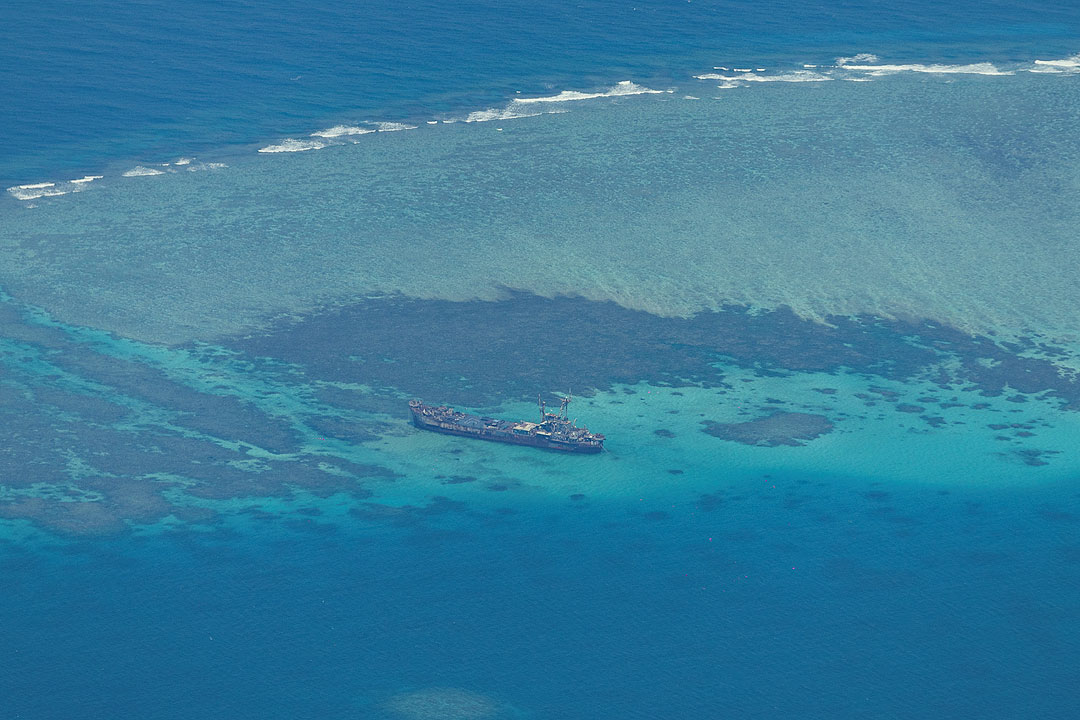US, Philippines to hold 2+2 meeting next week to tackle maritime issues

TOP DEFENSE officials and diplomats from the United States and the Philippines will meet on July 30 to discuss tensions with China in the South China Sea, the Philippine Department of Foreign Affairs (DFA) and US State Department said in separate statements.
In a statement on Monday evening, the DFA said US Secretary of State Antony John Blinken and Defense Secretary Lloyd J. Austin III would meet with Philippine Foreign Affairs Secretary Enrique A. Manalo and Defense Secretary Gilberto Eduardo C. Teodoro, Jr. to come up with solutions to regional and global security issues.
Their visit to Manila is part of their trip to Asia, where they seek to reassure allies and partners of US support, Assistant Secretary of State Daniel Kritenbrink told reporters in Washington on Monday, as the November US presidential election casts uncertainty over US foreign policy.
“The four secretaries are expected to discuss how to further enhance our two countries’ ironclad commitment to this alliance while enabling a common program in support of the rules-based international order, enhanced economic ties, broad-based prosperity,” the DFA said.
In a separate statement, the US State department said Mr. Blinken and Mr. Austin would also meet with Philippine President Ferdinand R. Marcos, Jr. to explore “additional ways to capitalize on the unprecedented momentum in the US-Philippine alliance.”
The US stands by its “ironclad” commitments to defend the Philippines against an armed attack in the South China Sea, Mr. Blinken told his counterpart Mr. Manalo during his visit to Manila in March.
He said defense ties with the Philippines were “extraordinary” and would only grow further, adding that Washington’s expanding alliances were not aimed at China.
In his third address to Congress on Monday, Mr. Marcos said the Philippines would continue to find ways to deescalate tensions in contested areas in the waterway “without compromising our position and our principles.”
“The Philippines cannot yield,” he said. “The Philippines cannot waver… The West Philippine Sea is ours,” he added, referring to areas of the South China within the country’s exclusive economic zone.
In April, Mr. Marcos met with US President Joseph R. Biden and Japanese Prime Minister Fumio Kishida in the nations’ first trilateral summit in Washington.
The leaders committed to boost ties in maritime security amid China’s growing assertiveness in the waterway.
Manila and Tokyo earlier this month signed a pact that eases the entry of equipment and troops for combat training, saying they want stability in the region.
In a separate statement, US Assistant Secretary for East Asian and Pacific Affairs Daniel J. Kritenbrink said Washington welcomes recent agreements between the Philippines and China to ease sea tensions.
“Our position has been to strongly support our Filipino allies as they have worked to maintain and resupply the (BRP) Sierra Madre, as they’ve done since 1999,” he said, referring to the World War II-era ship that Manila grounded at Second Thomas Shoal to bolster its sea claim.
The Philippines and China reached a “provisional arrangement” during a bilateral meeting on July 2 for resupply missions to Filipino troop stationed at the shoal, the DFA said at the weekend.
Chinese Coast Guard forces with bladed weapons on June 17 boarded Philippine rubber boats and looted several rifles stored in gun cases, actions that Manila’s military chief Romeo S. Brawner, Jr. said only “pirates” do.
A Filipino Navy sailor on a rubber boat lost his right thumb after the boat was rammed by a Chinese Coast Guard rubber boat, according to the Philippine military.
The Chinese Foreign Ministry on Monday said it would only allow Philippine resupply missions to the shoal if the Philippines informs it in advance. The DFA said Manila had never agreed to prior notification during talks with Chinese officials.
Both countries have also agreed to set up new lines of communication to improve their handling of sea disputes.
‘ALL-IN’
Beijing insists it has sovereignty over most of the South China Sea based on its old maps and has deployed hundreds of coast guard vessels deep into Southeast Asia to assert its claims, disrupting offshore energy and fishing activities of its neighbors including Malaysia and Vietnam.
China has ignored a 2016 international arbitral ruling that voided its claims for being illegal.
“I think the key now from our vantage (point) would be to ensure it (resupply deal) is implemented, and No. 2, that China ceases its provocative and destabilizing activities around Second Thomas Shoal that we’ve seen in recent weeks,” Mr. Kritenbrink said.
US tensions with China will provide the backdrop to the trip. Mr. Blinken is expected to meet his Chinese counterpart Wang Yi on the sidelines of regional meetings in Laos, he said.
Mr. Blinken will also visit Singapore and Mongolia, and stop in Vietnam for the funeral of Nguyen Phu Trong, head of the ruling Communist Party, who died last week.
The trip follows a tumultuous month in Washington. President Biden announced on Sunday he would not run for reelection, and endorsed his vice president, Kamala Harris, to replace him. The Republican nominee, former President Donald Trump, earlier survived an assassination attempt.
Asked what Mr. Blinken would say to allies about Mr. Biden’s decision to step aside and whether that could bring changes in policy, Mr. Kritenbrink said the message would be that America is “all-in on the Indo-Pacific.”
“We do try to reassure allies and partners that there are certain fundamentals, I think, about America’s engagement that are not going to change that have been consistent,” he said, citing American investments and bipartisan support in Washington for the administration’s approach to the region. — John Victor D. Ordoñez with Reuters



